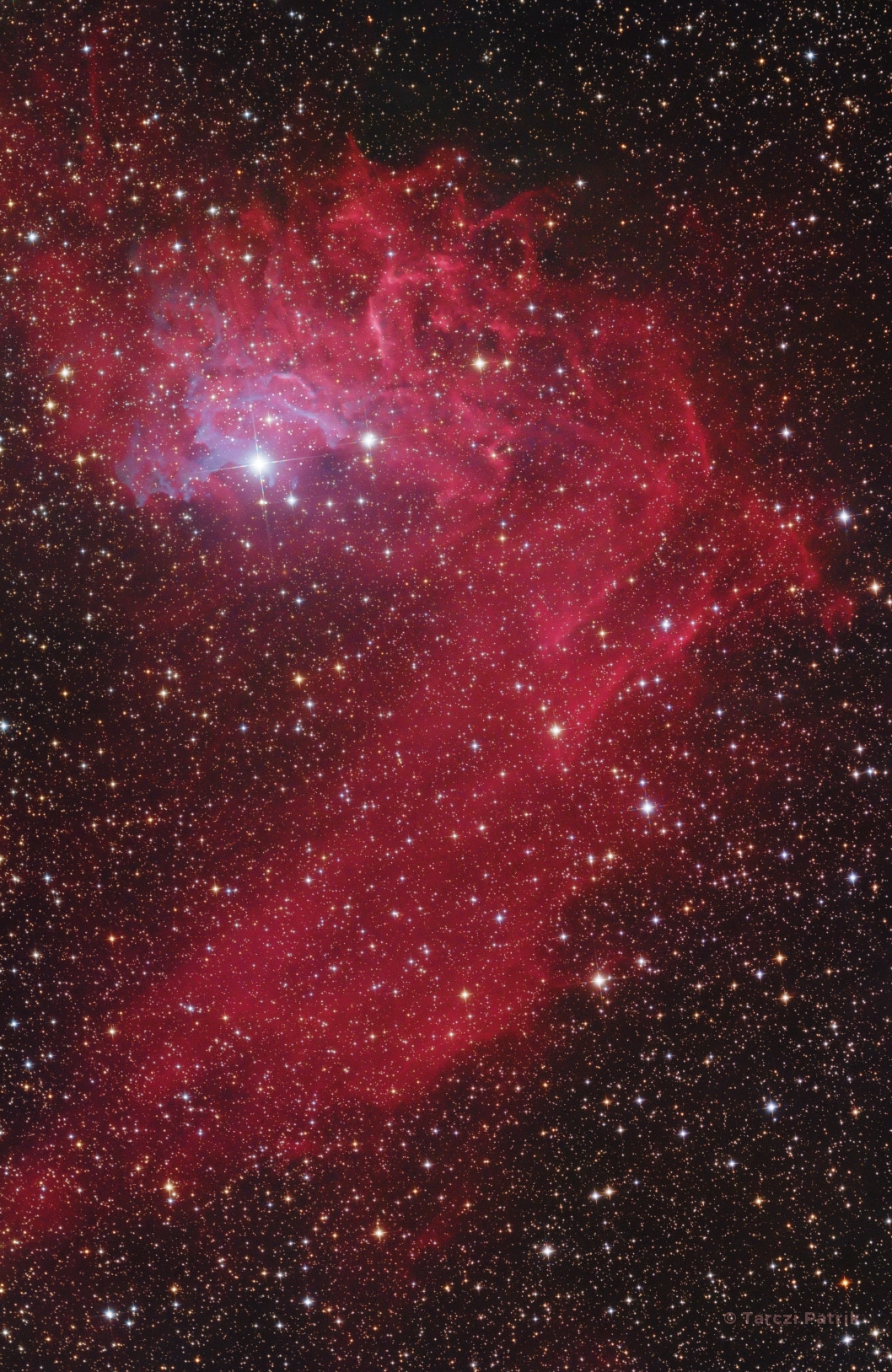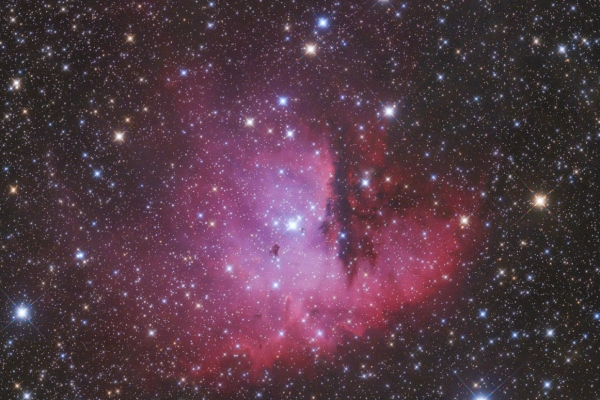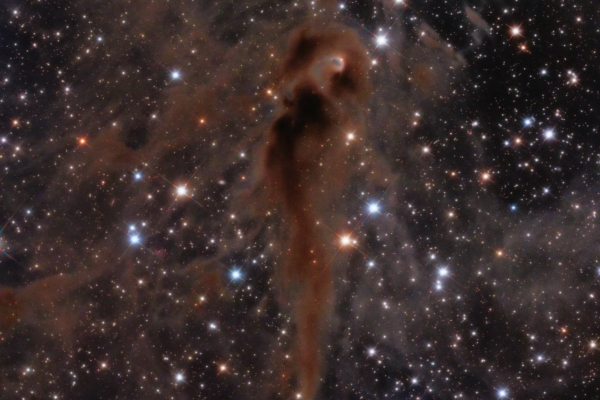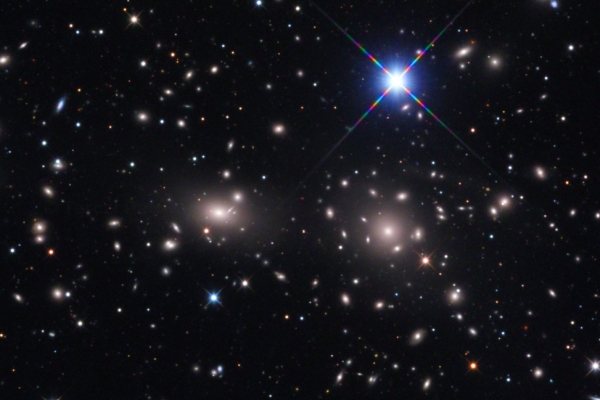The Flaming Star Nebula
IC405 and surroundings

Technical data
| Instrument: | 173/700 Newton-astrograph (ZsIO), SkyWatcher comacorrector F/4 |
| Camera: | Canon EOS 60D (modified) |
| Filter: | Baader UV/IR block |
| Mount: | SkyWatcher NEQ6 Pro Synscan (modified) |
| Guiding: | Lacerta M-Gen autoguider |
Image data
| Exposure time: | 64*5 mins ISO800 |
| Location, date: | Hungary, Izsákfa - 2014. November 20. |
| Transparency: | 5/10 |
| Seeing: | 6/10 |
| Temperature: | 4 °C |
| Processing: | CCDStack, Registar, Pixinsight LE, Photoshop |
Description
A runaway star lights the Flaming Star Nebula in this cosmic scene. Otherwise known as IC 405, the Flaming Star Nebula's billowing interstellar clouds of gas and dust lie about 1,500 light-years away toward the constellation of Auriga. AE Aurigae, the bright star at upper left in the frame, is a massive and intensely hot O-type star moving rapidly through space, likely ejected from a collision of multiple star-systems in the vicinity of the Orion Nebula millions of years ago. Now close to IC 405, the high-speed star's ionizing ultraviolet radiation powers the visible reddish glow as the nebula's hydrogen atoms are stripped of their electrons and recombine. Its intense blue starlight is reflected by the nebula's dusty filaments. Like all massive stars AE Aurigae will be short-lived though, furiously burning through its supply of fuel for nuclear fusion and exploding as a supernova. The colorful telescopic snapshot spans about 5 light-years at the estimated distance of the Flaming Star Nebula. Source: apod.nasa.gov
Technical data
| Instrument: | 173/700 Newton-astrograph (ZsIO), SkyWatcher comacorrector F/4 |
| Camera: | Canon EOS 60D (modified) |
| Filter: | Baader UV/IR block |
| Mount: | SkyWatcher NEQ6 Pro Synscan (modified) |
| Guiding: | Lacerta M-Gen autoguider |
Image data
| Exposure time: | 64*5 mins ISO800 |
| Location, date: | Hungary, Izsákfa - 2014. November 20. |
| Transparency: | 5/10 |
| Seeing: | 6/10 |
| Temperature: | 4 °C |
| Processing: | CCDStack, Registar, Pixinsight LE, Photoshop |
Recommended photos

The Pacman Nebula
In the '80 years living a succes game is called Pacman. The Pacman Nebula got its name after the protagonist of the game.

The Foal Nebula
Sitting in Cepheus not far from the Iris Nebula a network of Lynds Bright and dark objects can be found. This picture shows part of LBN468 which contains LDN 1150, 1155.

Coma Cluster of Galaxies
Coma Cluster is a dense cluster of galaxies in constellation Coma Berenices. It contains over 1,000 identified galaxies. Along with the Leo Cluster, they make up the Coma Supercluster.


